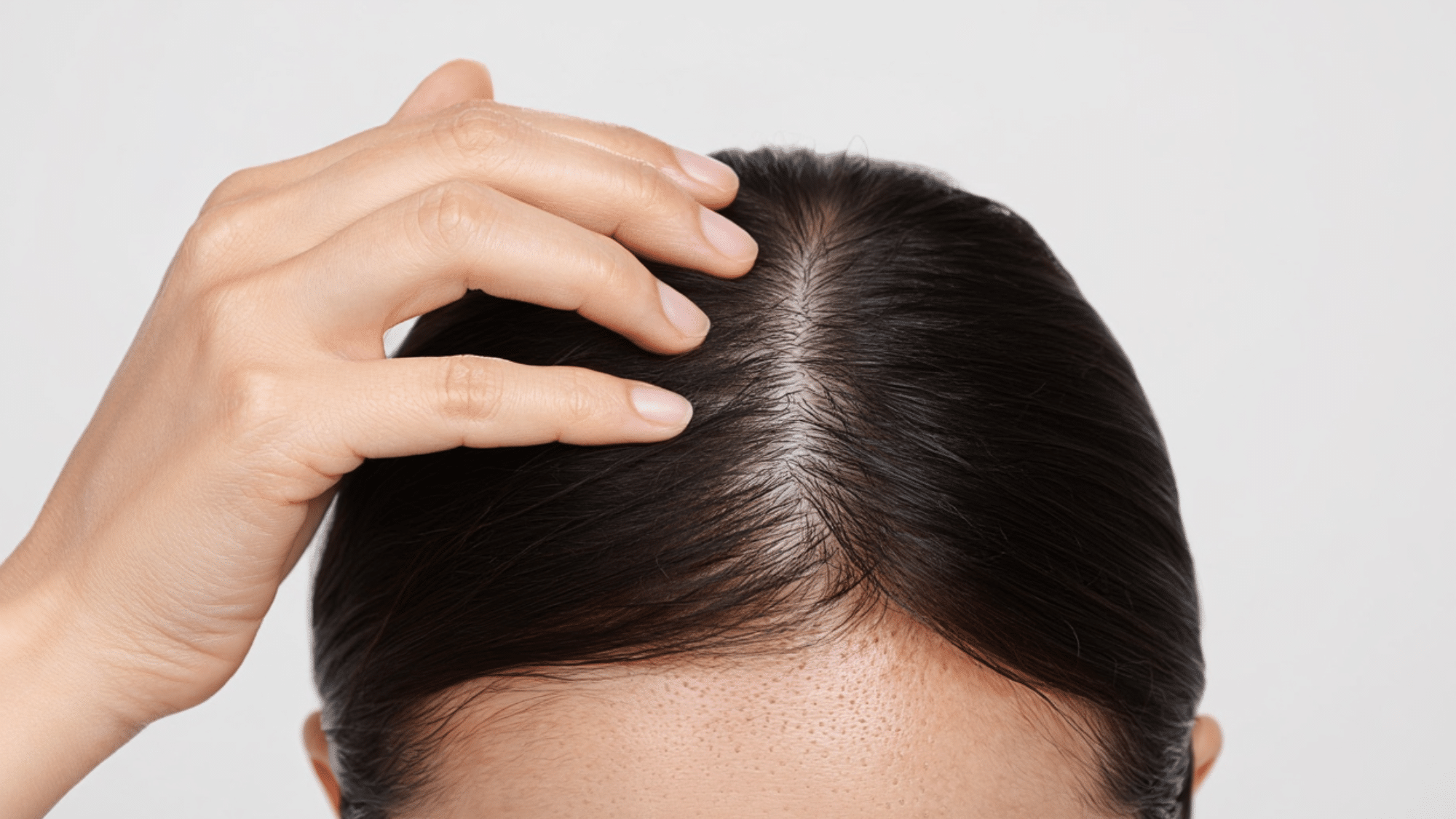How to know if your hair is growing in actuality or just sitting there doing nothing. You’re not alone if you’ve stared at your reflection, questioning whether those strands are making any real progress.
There are clear signs that show your hair is growing healthily. You don’t need expensive tools or salon visits to figure this out.
This blog post will show you the telltale signs of active hair growth. You’ll learn the science behind how hair grows and get practical tips to track your progress.
How to Know If Your Hair Is Growing? 5 Clear Early Signs
Not sure if your hair is actually growing? Early signs of healthy hair growth can be subtle but are easy to spot if you know what to look for.
Here are five clear indicators that your hair is making real progress, even before significant length changes become apparent.
1. Hairline Baby Hairs or Fuzz
People often notice tiny, soft, wispy hairs along their hairline, temples, and forehead. These hairs often stick up or look fuzzy. They are shorter than the rest of someone’s hair. This is a sign that new growth is starting its cycle.
2. Longer Time Between Trims
Someone might need haircuts less often, like every 8-10 weeks instead of 6. Split ends and damage take longer to appear. This means their hair is getting longer.
3. Tight Hairstyles Feel Tighter
Ponytails, braids, and headbands start to feel snug or leave marks. This happens because of increased hair length and volume.
4. Change in Length at Nape or Crown
People notice shorter hairs sticking out at the back of their neck or the top of their head. These areas often show growth first. Taking photos can help track subtle changes.
5. Increased Shedding (Normal)
Someone might find more hair in their brush or shower. Typically, about 50-100 hairs are lost per day. Growing hair pushes out old strands. This creates space for new, healthy hair growth.
If you are looking for a hair mask that suits your hair needs, check out our other blog: Best Conditioning Hair Masks in 2025.
Distinct Phases of Hair Growth Cycle

The hair growth cycle consists of four distinct phases: anagen, catagen, telogen, and exogen, each playing a crucial role in how hair grows, rests, and sheds.
Understanding these stages helps explain normal hair growth patterns and common causes of hair loss
1. Anagen (Growth Phase)
This is when your hair actively grows from the root. Most of your hair (85-90%) stays in this phase for 2-7 years. During anagen, cells divide rapidly in the hair follicle, pushing the strand upward.
Hormones like estrogen extend this phase, while stress can shorten it. Genetics determines how long your anagen lasts, affecting your maximum hair length.
2. Catagen (Transition)
A brief 2-3 week phase where growth stops and the follicle shrinks. Only 1-3% of your hair is in catagen at any time.
The hair detaches from its blood supply but stays in place. Age can make this phase longer, while good nutrition keeps it short.
Hormonal changes during pregnancy or menopause can disrupt this transition.
3. Telogen (Resting)
Hair rests for 2-4 months without growing or falling out. About 10-15% of your hair is in telogen. The follicle stays inactive while a new hair begins forming underneath. Stress, illness, and poor diet can push more hairs into this phase early. Genetics influence how many follicles rest simultaneously.
4. Exogen (Shedding/Replacement)
The old hair falls out as new growth pushes it up. This happens over 2-5 months, with 50-100 hairs shed daily. Seasonal changes affect shedding patterns; many people lose more hair in the fall.
Hormonal shifts, medications, and age can increase shedding. This phase overlaps with anagen as new hair replaces the old.
What to Do If Growth Seems Stalled?

If your hair growth seems stalled, and you want the answer to how to know if your hair is growing?
A few targeted steps can help. Consistent tracking, scalp-focused care, good nutrition, and professional advice ensure you spot progress and address underlying issues for better results.
- Track progress with monthly photos and measurements from the same spots for accurate comparison.
- Switch to scalp-focused products (like those with salicylic acid, tea tree oil, or niacinamide) and use clarifying shampoos weekly to prevent buildup.
- Check your nutrition: get your iron levels tested, eat protein daily, and consider supplementing with biotin, zinc, vitamin D, and omega-3 fatty acids for additional support.
- If there’s no improvement after three months, see a trichologist to check for underlying issues and get targeted treatments.
Smart Hair Habits to Promote Growth
Gentle detangling, protective styles, silk or satin pillowcases, scalp massages, and limiting heat all help reduce breakage and support healthy growth.
| Category | Best Practices | Cautions |
|---|---|---|
| Detangling | Start from ends to roots; use a wide-tooth comb; apply leave-in conditioner | Avoid brushing wet hair aggressively, as it’s prone to breakage |
| Protective Styling | Choose loose braids or low buns (2–3x/week); allow scalp to rest | Tight styles can lead to traction alopecia and damage |
| Night Care | Use silk/satin pillowcases; tie hair loosely or with a silk scrunchie | Avoid cotton pillowcases that cause friction and breakage |
| Scalp Care | Massage scalp daily for 5 mins; try rosemary or peppermint oil | Skipping scalp care can reduce blood flow and slow growth |
| Treatments | Use DIY masks for strength; consider clinical treatments like minoxidil or laser therapy. | DIYs reduce breakage but won’t trigger new growth |
| Heat Styling | Limit use; always apply heat protectant | Daily high heat damages the cuticle, slows visible growth. |
To Conclude
Now you know the real signs of hair growth from baby hairs at your hairline to longer intervals between trims. These indicators mean your follicles are working properly, not that you’re imagining things.
Hair grows slowly, about half an inch per month, so patience matters more than quick fixes. Focus on gentle care and healthy habits rather than expecting overnight miracles.
Everyone’s growth timeline is different. What matters is progress, not perfection.
Have you noticed any of these growth signs? Share your hair growth story in the comments – your experience might help someone else on their hair care path.






